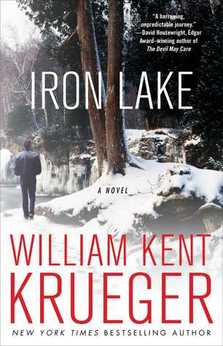|
7/11/2017 0 Comments Voice - Setting the Scene Previously, I wrote about setting the tone of a story using the literary technique Voice. To review, Voice presents the author's writing style, as well as the character's speech and thought patterns, creating a distinctive "sound" to a story. Today I'll discuss how Voice is used to set the scene. The two novels I selected as examples have drastically different locations. They are also different mystery sub-genres, with different reader expectations. I enjoyed both stories, and have read multiple novels by each author. Checked Out, by Elaine Viets, is # 14 in the Dead End Job series. Private Detective Helen Hawthorne lives in the Coronado Apartments with her husband Phil in Fort Lauderdale, Florida. As a cozy mystery, the reader wants enough description to know where they are, but doesn't need long passages of setting. The Flora Park Library was as beautiful as its name, Helen thought. The color of dawn light, the two-story building had a sun-warmed barrel-tile roof and graceful arched windows. A curving wrought-iron fence wrapped around the Mediterranean building like an elegant vine. I can see the library, or at least my interpretation based on the author's choice of descriptive words. Further details, as Helen moves around the library, are delivered in brief passages. A sentence here, a paragraph there. Here's another example of setting a scene in Checked Out. The one-bedroom apartment had smooth art moderne curves, a speckled terrazzo floor, and a slatted-glass jalousie door. The two private eyes used the former living room to meet with clients, and worked in the back room. Phil swore that Sam Spade would drink bourbon in an office like this, so he hung a brooding Bogart poster over his desk. But the office was too cheerful for dated noir romanticism. Coronado Investigations was clearly a successful small business. Viets packs a lot of information into a few words. More importantly, she establishes a cozy mystery voice, as well as her own unique voice within the sub-genre. Note how Viets slips in that this is not a noir-appropriate setting. The room is modestly stylish and cheerful.  Iron Lake, by William Kent Krueger is # 1 in the Cork O'Connor series. The ex-Sheriff lives in a remote Minnesota town. This is a thriller that relies on the setting almost as another character in the story. In a descriptive passage early in the story, Cork is a young man on a hunting trip with Sam Winter Moon. The sky was a clear blue, the air cool and still, the great woods full of the russet and gold of late fall. They moved quickly and Cork was filled with excitement. His stomach growled loudly from the fasting and he rustled the dry leaves as he walked. Sam said not to worry too much about the noise he made. A bear, especially a big one, would not be much concerned with sounds. The smell of a man, that was the thing to keep from a bear. Sam hoped they would be able to come at the animal from downwind. If not, he hoped the tallow would mask them. The reader learns the following: the forest is empty and quiet enough that walking through autumn leaves might alert animals to their presence. There is potential, but not immediate, danger. Krueger has established that he will describe a setting through his narrator's eyes in action sequences. Fitting for a thriller. In another example, snow dominates the description. The lake was lost behind the snow. Cork trudged through the drifts toward a tall Cyclone fence that edged Sam's property. My property, Cork still had to remind himself. On the other side of the fence was the Bearpaw Brewery, the buildings big and dark and indistinct through the blinding snow. He followed the fence to the edge of the lake. Although the rest of the lake had been frozen for awhile, a large expanse of water near the fence stayed open year round because of the runoff from the brewery. Warning signs had been placed on the ice, and safety stations with sleds and life rings stood along the shore. Cork was surprised to see a figure in a familiar red coat hunched at the water's edge. The reader definitely knows it's cold by the end of this paragraph. The lake, the ice, and the snow later play an important role in the plot.  Sentence and paragraph length, word choices, and how those words are strung together, all contribute to the creation of voice. An author who makes effective use of voice will be easily recognizable. Let's take a closer look. Viets: Florida library. Her word choices evoke beauty and comfort - a place the reader might like to visit The building is the color of dawn light, has a sun-warmed barrel-tile roof, and graceful arched windows. Krueger: Minnesota lake. His word choices evoke danger. The brewery buildings are "big and dark and indistinct," and the lake has warning signs posted. The mention of safety stations implies the lake is a place where a person would be wise to watch his or her step. Obviously, different locations will require different descriptive language. The point is, when describing the setting, every word choice lends itself to the development of the unique voice of the story. Consider voice as you read your favorite authors. What do their setting descriptions convey? Do they fit the author's genre?
0 Comments
Your comment will be posted after it is approved.
Leave a Reply. |
Subscribe to this blog: |
Proudly powered by Weebly
 RSS Feed
RSS Feed